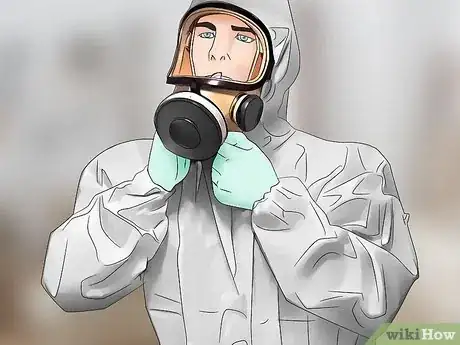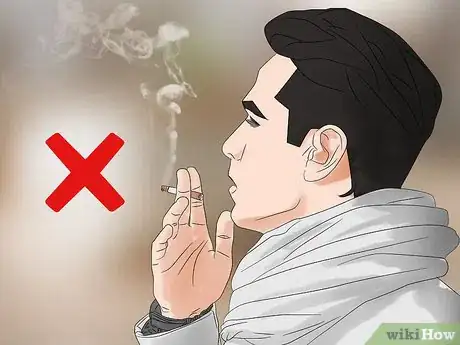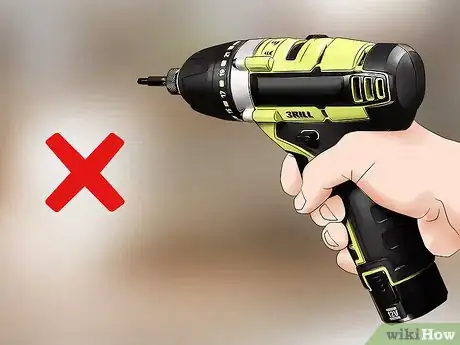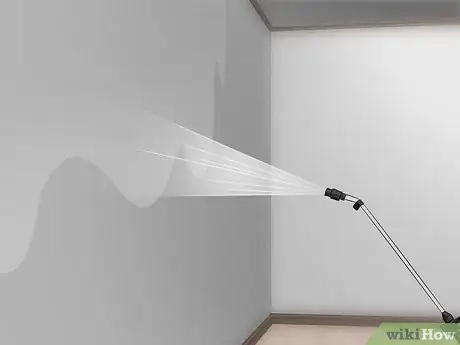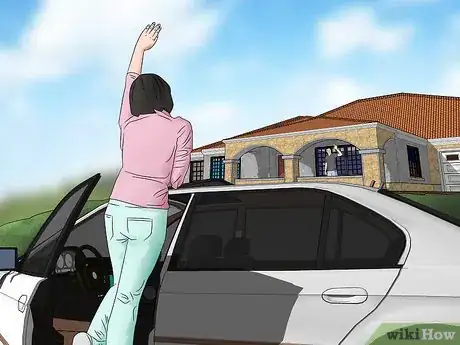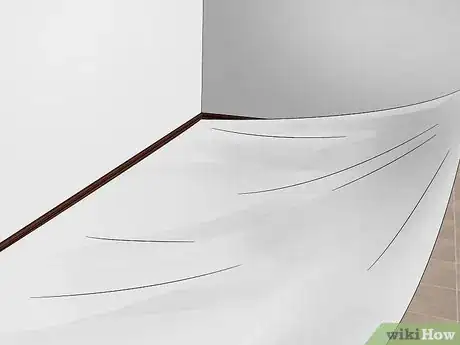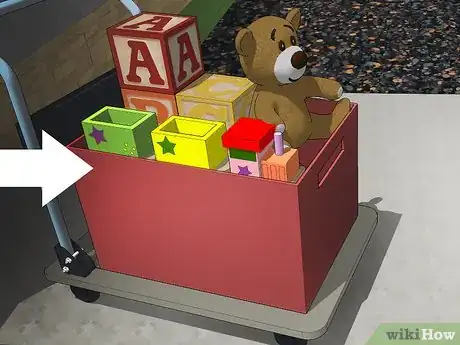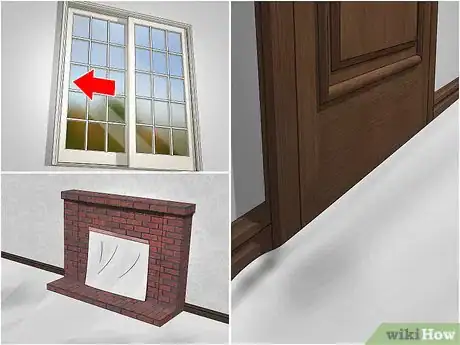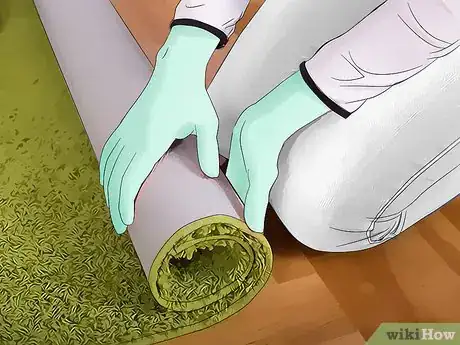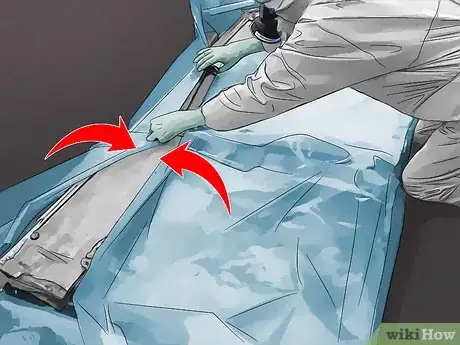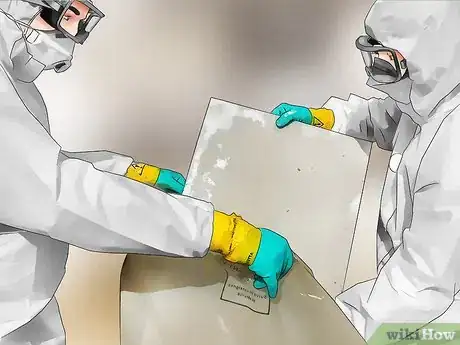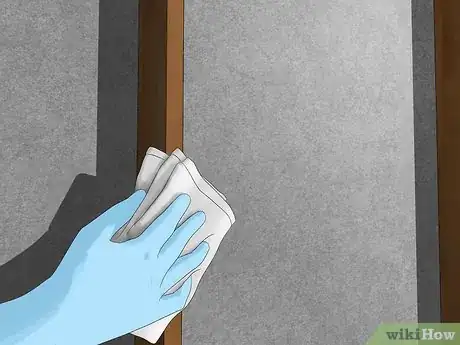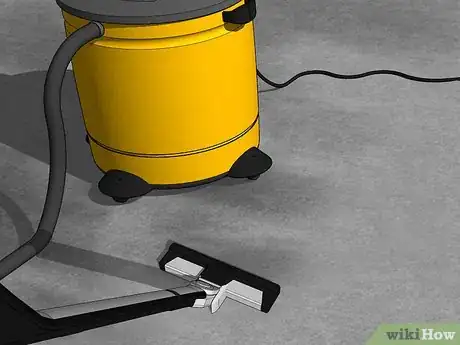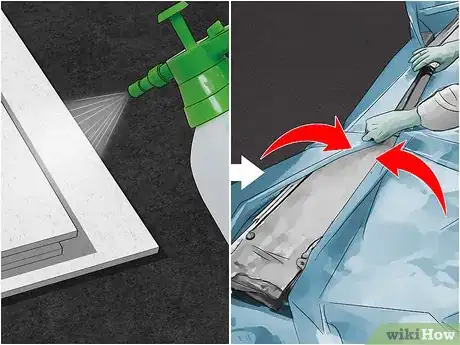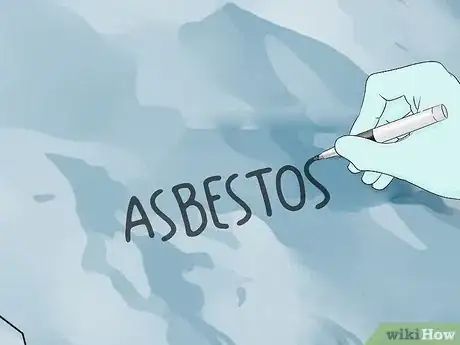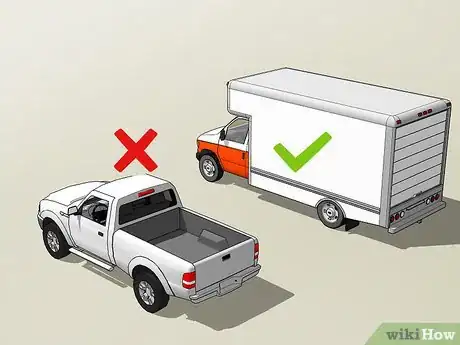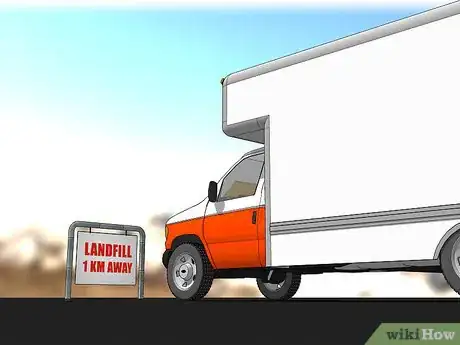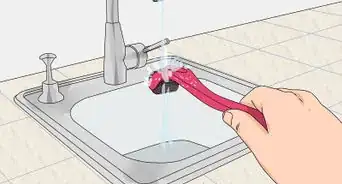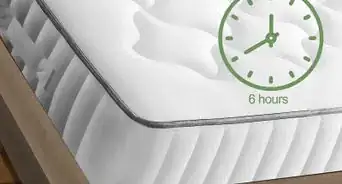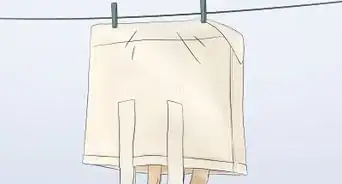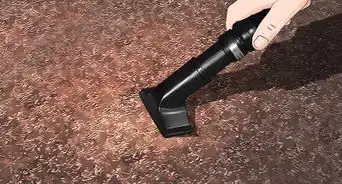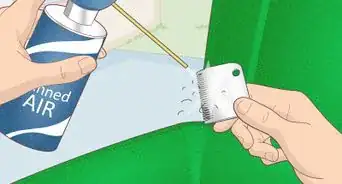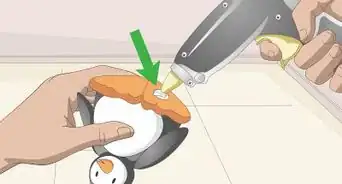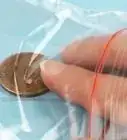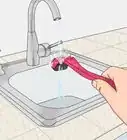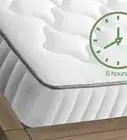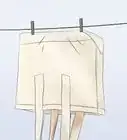This article was co-authored by Gregory Cade, JD. Gregory Cade is an Environmental and Occupational Law Attorney. With over 25 years of experience, he has extensive knowledge in injuries resulting from toxic substance exposure like pesticides. He is a member of numerous professional organizations, including The American Bar Association, The National Association of Environmental Professionals, and The American Association for Justice. Gregory graduated with a BS in Natural Science and Mathematics with an emphasis in Chemistry and Biology and an MPH in Occupational Health, Safety, and Industrial Hygiene from The University of Alabama at Birmingham. He also holds a JD from Miles School of Law.
This article has been viewed 23,509 times.
Asbestos is a naturally-occurring mineral which was commonly used in construction in the second half of the 20th century. It is made up of long, thin, fibers which are hazardous if inhaled as dust. Governments banned asbestos use in future construction when studies indicated the dangers of asbestos. Contractors are removing asbestos from buildings as it contributes to an increased risk of lung cancer, asbestosis, and mesothelioma. You should always hire a licensed asbestos-removal contractor to remove and dispose of asbestos in commercial areas, but non-professionals may operate removals in domestic settings.
Steps
Taking Safety Precautions
-
1Wear personal protection equipment. It is vital that you wear the appropriate equipment for the removal of asbestos. Since asbestos is a hazardous material, you must take the correct clothing precautions.[1]
- You should wear a respirator approved for handling asbestos. Single-strap dust masks do not provide adequate protection.
- You should also wear a hat, gloves, safety goggles, good quality disposable coveralls with a hood, and rubber boots with disposable covers.
-
2Avoid eating, drinking, or smoking near the work area. Doing these activities near the area you're working in could expose you to dust particles which you could inhale or ingest. Set up a designated rest area away from the places you'll be working. [2]
- Wash your hands and face rigorously with soap and water before lunch breaks and after you've finished work for the day.
Advertisement -
3Avoid using power tools directly on the asbestos. Using power tools directly on the asbestos will break the asbestos and release the harmful asbestos fibers into the air. Only use power tools on materials you are completely sure are not made of asbestos. If in doubt, avoid using power tools at all.
- Asbestos is considered hazardous waste if it's friable (meaning you can break it into powder easily). Avoid breaking it up to prevent yourself from inhaling dangerous dust.[3]
-
4Wet the asbestos with water. Using a pump spray, lightly dampen the asbestos with water. This will ensure that the dangerous dust sticks to the sheets and will reduce the risk of particles getting into the air. Make sure to spray as much of the asbestos as you can. [4]
-
5Advise family members and neighbors to leave the area. When working with asbestos, you should always secure the place. Tell people who might be in the same area about the nature of the work you're doing. You can tell family members and neighbors about the dangers and suggest they leave the area.
- If family members or neighbors do not leave the area, make sure they stay indoors for as long as they can with the windows and doors shut.
- You should also take pets from the area and advise neighbors to do the same.
-
6Place plastic sheeting under the workspace. This is to prevent any loose asbestos dust from contaminating the ground and causing danger after the job is complete. Use thick plastic sheeting or thick plastic bags. To be extra safe, lay 2 layers of plastic wrapping.[5]
- Do not use recycled or reused plastic bags.
-
7Move children's play equipment away from the area. The equipment should either be securely stored in a shed or similar structure or transported away from the area. It is not enough to simply cover the equipment with plastic. Sandpits or areas where children play sports that you cannot remove should be well covered by plastic wrapping.
-
8Close windows and doors and seal the room. Use tape and plastic sheets to cover vents and the bottom of doors to prevent any particles from escaping the area. Seal the room, or rooms, off from other areas of the house. Fireplaces should also be well covered with plastic sheets.
-
9Remove furnishings from the work area. Take all curtains, rugs, and carpets from the area and store them elsewhere. These furnishings will trap dust which can later escape back into the air.
- As an extra precaution, these items should also be tightly sealed in plastic bags.
Cleaning up the Asbestos
-
1Stack, wrap, and label the asbestos. Set up plastic sheets and place the asbestos sheets on top of them. Then double wrap the asbestos sheets and double tape the wrapping to ensure it's sufficiently sealed. Use labels to clearly indicate that the bags contain asbestos so people processing the waste understand it's hazardous.[6]
- When placing asbestos sheets on top of each other, do not slide or skid the sheets. Gently place the sheets directly over each other. Sliding or skidding can damage the asbestos and release the fibers into the air.
-
2Remove the asbestos from the area immediately. Leaving the asbestos around the room is only waiting for trouble. You might step on it, trip over it, or knock it over.[7]
-
3Clean the entire workspace. Use a damp cloth or rag to clean any items or areas which may have asbestos dust on them. You should clean any area asbestos passed through as thoroughly as the workspace itself. Ensure that no asbestos leaves the area on shoes, power tools, or clothing.[8] [9]
- Place all disposable clothing and cloths or rags used in cleaning in disposable bags and label the bags so it's clear they contain asbestos.
-
4Vacuum the work area with a specialized asbestos vacuum. You must not use a household vacuum cleaner for this task. Use only specialized asbestos vacuums designed to ensure the minimal amount of asbestos, if any, enters the air.[10]
- If you're buying a vacuum for the job, go to your local hardware or electrical store and ask for a HEPA (High-Efficiency Particulate Air) vacuum cleaner.
Dumping the Asbestos Waste
-
1Dampen and double wrap the asbestos. Use the pump spray to lightly dampen the asbestos before double wrapping it to keep as much dust as possible stuck to the asbestos. Wrap the plastic as tightly as possible around the asbestos to ensure no dust escapes. Tape the wrapping together when finished as tightly as you can to ensure no dust escapes.[11]
-
2Tape and label the plastic wrapping. When the asbestos is tightly wrapped, use tape to secure the plastic bags and make sure they don't become loose. Place labels on the wrapping to clearly indicate that it contains asbestos.
-
3Transport all waste in a covered, leak-proof vehicle. Do not use an open-top truck or any other vehicle that isn't sufficiently sealed to transport the waste. Open top trucks and other vehicles allow the possibility of damage to the plastic wrapping and asbestos dust could escape into the air.[12]
-
4Dispose of the asbestos at an approved landfill site. Make sure that the landfill site can take asbestos waste before you start your journey. You can find a list of approved landfill sites in your area by searching online for "[Your location] asbestos-approved landfill sites."[13]
- Do not attempt to recycle asbestos or place it in domestic bins.
Warnings
- If there has been any hail or fire damage done to the asbestos, call a licensed asbestos removal contractor. Do not remove it yourself.⧼thumbs_response⧽
- Do not drill or cut into asbestos. Again, doing so will only release asbestos dust particles into the air.⧼thumbs_response⧽
- Do not power-wash or scrub the asbestos with a brush. Both of these processes will also damage the asbestos and release the dust into the air.⧼thumbs_response⧽
Things You'll Need
- A dust mask with 2 straps
- Overalls with a hood
- Safety goggles
- A hat
- Gloves
- Pump spray
- Thick, non-recycled plastic bags
- Tape
- Plastic sheeting
- A HEPA vacuum cleaner
- A covered, leak-proof vehicle
References
- ↑ https://www.mesothelioma.com/asbestos-exposure/handling/
- ↑ https://asbestosawareness.com.au/asbestos-removal/diy-remova/
- ↑ https://dtsc.ca.gov/managing-asbestos-hazardous-waste
- ↑ https://asbestosawareness.com.au/asbestos-removal/diy-remova/
- ↑ https://asbestosawareness.com.au/asbestos-removal/diy-remova/
- ↑ http://www.epa.ie/waste/hazardous/asbestos/
- ↑ https://asbestosawareness.com.au/asbestos-removal/diy-remova/
- ↑ https://asbestosawareness.com.au/asbestos-removal/diy-remova/
- ↑ http://www.asbestos.vic.gov.au/in-the-workplace/clean-up-and-disposal
- ↑ https://www.health.gov.au/sites/default/files/documents/2022/07/enhealth-guidance-asbestos-guide-for-householders-and-the-general-public.pdf
- ↑ https://asbestosawareness.com.au/asbestos-removal/diy-remova/
- ↑ https://asbestosawareness.com.au/asbestos-removal/diy-remova/
- ↑ https://asbestosawareness.com.au/asbestos-removal/diy-remova/
